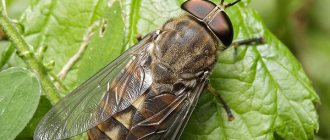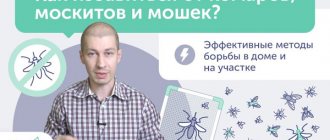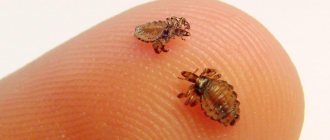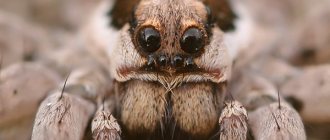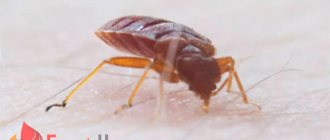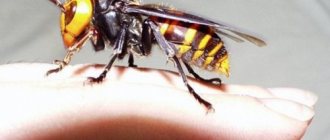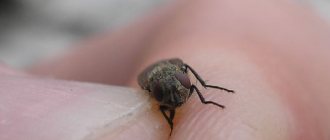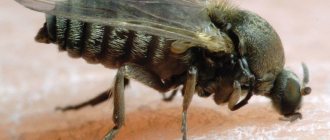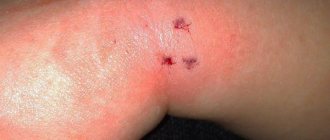Mosquitoes are often the name given to all vile creatures that feed on human blood: mosquitoes, midges, horse flies. But this is not true.
To understand what a mosquito is and how it differs from its fellow subfamily of long-whiskered insects, the mosquito, you need to know what it looks like, its habitat and the consequences of bites for humans.
Mosquitoes: description and types
According to various estimates, there are from 300 to 1000 species of mosquitoes.
At the same time, detailed information about them is almost impossible to find in the public domain. They belong to two-winged, long-whiskered insects from the butterfly family. Mosquitoes are very small insects that are yellowish or gray-brown in color. They have long legs, elongated oval wings, the size of which is almost equal to the length of the body. The insects are covered with small hairs and look slightly shaggy. Hairs even grow along the edges of the wings.
Mosquitoes have black eyes. Their nose is strongly extended forward and turned into a proboscis, with which they feed. Male mosquitoes are exclusively herbivorous insects. They consume flower nectar, plant sap, and honeydew, a sweetish sap secreted by aphids. Only females bite. With their proboscis they pierce the skin of animals and suck out some blood.
Mosquito and mosquito: differences in structure and appearance
Many of us are accustomed to thinking that a mosquito is a huge insect with a long nose; in fact, this is not entirely true.
Peculiarities:
- The length of the mosquito body is only 3 mm. That is, he is very tiny. In this case, the body length of a mosquito can reach 1 centimeter.
- To differentiate, you need to pay attention to the wings. In a mosquito, they stick out and are located at approximately a 90-degree angle to the body. The mosquito's wings, in turn, lie on the body, almost parallel to it.
- To determine, you can also look at the color of the abdomen. In a mosquito it can be white and even golden. The average mosquito has a brown or greenish body. There may be some gray flecks.
- Both mosquitoes and mosquitoes bite quite painfully, but the bite technique is somewhat different. The fact is that the mosquito's saliva contains a special substance that thins the blood, making it more fluid.
- Accordingly, after a mosquito bite, redness and a swollen spot are observed. Very often, bites are confused with allergies or a midge bite. The lesion is very similar to a button after a Mantoux vaccination. And after a mosquito bite, there is simply a red dot if there is no allergic reaction.
General information
Mosquitoes belong to the suborder of long-whiskered insects.
Approximately 700 species are known, forming several genera. Rating: 10 best mosquito repellents
Rating: 10 best mosquito repellents
Even the best spray against mosquitoes and ticks in nature does not always protect against other blood-sucking insects...
netkomaram.ru
Open ›
The most famous and numerous are:
- Sergentomy.
- Phlebotomus.
- Lutzomia.
Mosquitoes are sometimes mistakenly called mosquitoes, which is completely wrong. Although they are part of the midge complex, they differ in appearance and habitat. According to the classification, mosquitoes are a family of blood-sucking mosquitoes, and mosquitoes are a family of butterflies that look like small moths or butterflies.
The harm and benefits of mosquitoes
Traditional opinion: there is no benefit from bloodsuckers, only harm. In fact, these small flyers, together with other similar insects, form the base of the food pyramid in any ecosystem: forest, desert, city, etc. Many species of birds, amphibians, reptiles and animals feed on the adults. The larvae, by processing organic matter rotting in the ground, contribute to the inexhaustibility of the soil.
Insect bites
But they can also cause significant harm to humans. Mosquito bites are painful. When bitten, the bloodsucker sprays saliva into the wound with substances that prevent blood clotting.
In hot regions, phlebotoderma can develop as a result of the human body's sensitivity to mosquito bites. This reaction to bites is expressed in a rash of itchy nodules all over the body.
Mosquitoes are carriers of the disease leishmaniasis. This is a parasitic disease that manifests itself in the form of ulcerative papules. In addition to leishmaniasis, mosquitoes can transmit pappataci fever and bartonellosis. All these diseases are usually common in the southern regions of Eurasia and the population of the northern part would not have to fear them. But, due to global warming, not only southern species of plants and animals, but also pathogens are moving north.
Pappataci fever is one of the most dangerous diseases. Distributed in the Mediterranean, the Balkans, the Middle East, Indochina and East Africa. It is carried by mosquitoes called fever. What do Phlebotomus pappataci mosquitoes look like:
- size 2-3 mm;
- color pale yellow;
- the wings and body are covered with light long bristles.
The bites of this type of bloodsucker are painless; a person does not notice that he has been attacked by a papal mosquito. For this reason, you may not attach importance to the symptoms of an incipient disease.
Galileo. Mosquitoes: Video
Mosquitoes are a subfamily of long-whiskered dipterous insects that are part of the midges. The subfamily includes several genera. In particular, these are Phlebotomus and Sergentomyia in the Old World and Lutzomyia in the New World. Within these genera there are more than 700 species of insects.
Mosquitoes are most common in the tropics and subtropics. They are very attracted to countries with a hot, dry climate, but they can also be found in some northern latitudes. Mosquitoes thrive both below and above sea level. Approximately 30 species of mosquitoes living in European countries have been described. In the CIS they can be found on the southern coast of Crimea, the North Caucasus, Transcaucasia, and Central Asia. The only place where mosquitoes have not been detected is New Zealand and the Pacific Islands.
Mosquito sucks blood
In nature, mosquitoes live in shaded dense bushes, in caves and in mountain crevices, near steep river banks. Female mosquitoes are especially fond of accumulations of decaying organic matter, which release hexanol and isoamyl alcohol. In such places they lay eggs. Mosquitoes living in semi-desert conditions make their home in the burrows of the thick gerbil, thin-toed ground squirrel and some other rodents. This is due to favorable temperature and humidity for the development of both larvae and adults. In populated areas, insects settle in cracks in walls, darkened areas of living quarters, cluttered attics and basements, garbage dumps, and thickets of weeds.
Mosquitoes are especially active at night. They can be recognized by their characteristic leaping flight, a body covered with hairs and wings that are raised above the abdomen when at rest. The mouthparts of mosquitoes are of the piercing-sucking type with a long proboscis. Female insects feed on the blood of animals and humans. Blood is needed for the maturation of eggs.
Habitat for mosquitoes and mosquitoes
Mosquito and mosquito
Mosquitoes live in almost all corners of the planet, with the exception of the extreme regions of the south and north poles. They prefer damp places, stagnant bodies of water and relatively warm climates. But in harsh winter conditions, some representatives of mosquito species can hibernate and wait out unfavorable times.
Mosquitoes live in warm countries with tropical climates. They are found in Asia, Africa, Latin America, and southern Europe. In Russia, you can become a victim of a mosquito while in the subtropical regions of the Caucasus, Abkhazia, and Krasnodar Territory. Mosquitoes also need proximity to a source of fresh water.
Reproduction nuances
The difference between a mosquito and a mosquito can also be traced in the characteristics of reproduction. Most mosquito species breed directly in water. They lay eggs there, which later develop into larvae. The larvae feed on microorganisms and small algae in the pond, then turn into a pupa. From the pupal stage, the mosquito turns into a fully formed individual and takes off from the surface of the water.
Interesting!
Some types of mosquitoes lay their eggs in the soil. All stages of maturation occur in the ground. The larvae feed there on plant particles or root crops.
Mosquitoes raise their young in well-moistened soils rich in organic compounds. Scientists studying these representatives of dipterans have noted that females prefer to lay eggs near manure heaps and garbage dumps. The voracious larvae consume the organic waste around them.
Developmental biology
Like all other dipterous insects, mosquitoes have 4 developmental phases: egg, larva, pupa, and imago. Mosquitoes usually feed on natural sugars - plant sap, honeydew, but females require blood to mature their eggs. The number of blood draws may vary depending on the type. The time it takes for eggs to mature depends on the species, the rate of blood digestion, and the ambient temperature; in laboratory conditions - usually 4-8 days. Eggs are laid in places conducive to the development of pre-imaginal stages. The pre-imaginal stages include the egg, three (or four) larval stages and the pupa. Research conducted at Ph. papatasi
and
Lu.
longipalpis showed that females are attracted to hexanol and 2-methyl-2-butanol released from chicken and rabbit droppings, and are stimulated to lay eggs by the presence of a clutch of eggs of the same kind. The breeding sites of mosquitoes have not been studied enough, but it is known that their larvae, unlike most butterflies, are not aquatic, and from observations of laboratory colonies it can be concluded that the main requirements for the breeding site are humidity, coolness and the presence of organic substances. In the arid zones of the Old World, mosquitoes live and breed in rodent burrows or in cracks in the soil.
Lutzomyia longipalpis larva
.
Most Palaearctic species are characterized by diapause, into which the larvae enter in the fourth stage. In May-June, the larvae pupate at approximately the same time, and adult insects appear immediately in large numbers.
The larvae need liquid water - placed in a test tube with water so that they remain above the water level, without direct contact with it, they die within 24 hours. Since the larvae of most butterflies are aquatic, it can be assumed that mosquito larvae have adapted to exist in moist soil. Mosquito eggs can survive in water for a long time; larvae can hatch in water and live in it for up to five days (first stage). The fourth stage survives in water for up to 14 days. Once removed from the water, they can continue to develop normally.
Most mosquitoes are active during twilight and night time. Unlike mosquitoes, they fly silently. The Italian name for the mosquito that gives its name to the type species is pappa tachi, meaning “bites silently.”
Insect bites
Insect bites
Both types of bloodsuckers are dangerous to humans and other living beings. Depending on the sex, the diet of mosquitoes is different. The females of these insects must feed on blood to form eggs in their bodies. Males are harmless creatures that feed on plant nectar.
Before biting her victim, the female mosquito makes several jumps on the skin, then plunges her proboscis under the skin. When she bites, she injects a blood thinner, just like a female mosquito.
Mosquitoes are carriers of dangerous diseases:
- leishmaniasis;
- mosquito fever;
- bartonellosis and others.
They cause the greatest harm to livestock. Huge clouds of mosquitoes can cover an entire herd of cattle overnight and cause the animals to die. They are as dangerous to humans as mosquitoes. Both types of insects are similar in some ways, but also have certain differences.
Peculiarities of mosquito behavior
The difference between mosquitoes and mosquitoes lies in the peculiarities of their life activity. Mosquitoes can annoy people almost all day long.
Mosquitoes have a certain time of day for this - they go out for their daily hunt as soon as the sun begins to set below the horizon.
This time, and after another hour, the insects show their unprecedented activity; cases have been recorded when mosquitoes gathered in a whole swarm, which could easily surround a pet from all sides. In human dwellings, mosquitoes can bite throughout the day.
Mosquitoes choose places of their bite mainly on those parts of the body where there is no clothing.
6 reliable mosquito repellents
In large quantities they can get into the ears, folds of the skin, and nostrils.
Only the female sucks the blood of a person or animal. Having chosen a victim, the female makes several jumps on the skin, releases her proboscis and pierces it.
A special substance is released from the mosquito's proboscis; it thins the blood and makes the process of absorbing viscous liquid a matter of seconds. Males are not bloodthirsty and feed on plant sap and organic matter.
To reproduce, the female needs to drink blood - after which she lays eggs in a dark place for 5 - 10 days.
The eggs hatch into larvae that, before turning into adults, live in the ground and feed on organic debris. Full sexual maturity is reached after about three months. The female is capable of laying three clutches during the summer season.
The greatest activity of mosquitoes begins to be observed in mid-July and in August.
What is the difference between mosquitoes and mosquitoes?
The differences between mosquitoes and mosquitoes are relative; these two concepts, thanks to the interpenetration of languages and cultures, are practically inseparable. The word mosquito is of Proto-Slavic origin, it is related to the word “bumblebee” (the initial sound was replaced by a hissing sound, the vowel letters were alternating o/e). The word was most likely onomatopoeic, although there is a pseudoscientific version linking blood-drinking parasites and disease carriers with the dark goddess Mara. The words “haze”, “pestilence”, “haze” are linked to the same folk etymology. Another version is the origin of the word “com”, that is, a swarm, a large number of insects in the air.
With mosquitoes everything is much simpler. In Spanish, mosquito is a small fly. In the 18th century in the southern United States, the word passed into the English language and today all English speakers call our mosquitoes exclusively mosquitoes.
In the Russian language, however, there is still a formal difference, as between intelligence officers and spies. Mosquitoes are bloodsuckers that live mainly among us. This is, first of all, the Culicidae family, relatives of the most common squeaking mosquito in Russia, Culex pipiens. The standard size of common mosquitoes is 7-10 mm, but among them there are also tiny ones (3-5 mm) and giants - up to 10 cm, although they do not live in Russia. The largest domestic dipteran long-whiskered is the centipede (Tipulida), reaching 4 cm. It does not drink blood, but its larva is a parasite of cultivated plants.
The mosquito community usually includes Anopheles anopheles mosquitoes, Aedes biting mosquitoes, etc. All of these insects belong to the group Nematocera (Long-whiskered) of the order Diptera (diptera). Here, by the way, lies scientific cunning. In fact, both mosquitoes and mosquitoes have four wings, but one pair is underdeveloped and has turned from an organ of movement into an organ of balance - the halteres.
Differences in the appearance of mosquitoes and mosquitoes
As for mosquitoes, since the 19th century Russian travelers have understood them to be small (up to 3 mm in length) insects that are widespread in the south - in the subtropics, tropics and equatorial belt of our planet. At the same time, for some reason, midges (Ceratopogonidae), which are found in abundance in Siberian forests, were not considered mosquitoes.
Another conditional difference is coloring. It is believed that the body of the mosquito is gray or black, and the body and wings of mosquitoes are covered with colorful patterns. It is also very doubtful - with the size of a mosquito being 3 mm, it is only possible to see the ornaments under a magnifying glass.
Habitat and behavioral characteristics of mosquitoes and mosquitoes
Diptera live on earth everywhere except Antarctica. But if we adhere to the not entirely scientific division into mosquitoes and mosquitoes, then the former live everywhere, and the latter are limited from the north and south to approximately 40-45 parallels. Above and below the globe their path is closed.
The process of reproduction of mosquitoes and mosquitoes
There are no particular differences in the reproductive process between mosquitoes and mosquitoes. The main highlight of the process is the vital need for female insects to receive fresh blood, preferably warm-blooded animals. Mosquitoes in the savanna and midges in the polar tundra are equally capable of driving buffalo and reindeer to white heat. In the summer, animals lose up to 300 ml of blood daily from bites, and the weakest die from allergic reactions caused by substances that come with the saliva of insects. These are anticoagulants that slow down blood clotting and allow the female to pump enough and ensure the maturation of the eggs.
Our northern mosquitoes lay their eggs exclusively in water. Foreign mosquitoes are able to satisfy themselves with rotting vegetation, topsoil, and even wet sand.
Read more about mosquito and mosquito bites
Culex mosquitoes usually land on the skin, immediately and accurately choosing places where the capillaries are as close to the surface as possible. Mosquitoes do not possess such sniper talents. Their females make several jumps before finding the right place. The mosquito or mosquito then inserts its stinging proboscis into the skin and drinks the blood. The angle of the injection can be different and depends on the type and size of the insect. Male mosquitoes and gnats are not interested in blood; their proboscis is soft and short, suitable only for drinking nectar from plant flowers.
By injecting a hemostatic substance into the wound, the female insect transmits to the victim a huge number of microorganisms - viruses, bacteria, protozoa, microscopic larvae of round filaria worms. The overwhelming number of uninvited guests are destroyed by the body's immune cells, hastily summoned to the site of the bite. But some enemies are able to break through and cause infection. Mosquitoes are carriers of dangerous diseases such as malaria, tularemia, yellow fever, and viral hemorrhagic fevers. Mosquitoes carry tularemia, encephalitis, and parasitic infestations.
Types of mosquitoes in Russia
All representatives of the mosquito family love moisture, warmth, and settle near bodies of water, as well as in city basements. They fly into the room through cracks, open windows, and doors. Many species drink blood, but there are agricultural pests and absolutely harmless creatures. The main differences between males are in size - they are always smaller than females, and their whiskers are branched, brush-shaped.
Mosquito squeaker
He's an ordinary mosquito. Latin name Culex pipiens. Found everywhere, loves marshy areas and forests. Lives in city basements. Summer begins in May. The female lays from 50 to 200 eggs on the surface of the water or in damp soil. Over the course of the entire season, several generations of culex are replaced. Maximum lifespan is 48 days.
You can see what a mosquito looks like in the photo below. Body size from 3 to 7 mm. Females are always larger. Long legs, thin transparent wings, small head, clearly visible mouthparts in the form of a proboscis. The male mosquito has long, branched, brush-shaped whiskers, while the female's are straight. The diet of mosquitoes varies depending on gender.
Squeaker mosquito
Yellow mosquito
Yellow fever biter, tiger mosquito. In Latin it sounds like Aedes aegypti. These species of mosquitoes are spreaders of dangerous diseases. Carries dengue fever, yellow fever, and Zika virus. Its homeland is Africa. Gradually appeared in Central America on the Caribbean islands. They are found in Russia, Georgia, and Ukraine.
The female mosquito reaches a size of 7 mm, males - about 4 mm. Externally recognizable appearance. Dark body with white markings. There are even spots on the legs. The black mosquito lives in wetlands and forests with high humidity. During the season, 5 generations will change. The female is capable of laying 200 eggs at a time. Its lifespan is from 14 days to a month.
Asian tiger mosquito
Females need protein food to reproduce healthy offspring. Males eat flower nectar and plant juices. Their lifespan is no more than 2 weeks.
Malaria mosquito
Anopheles translated from Greek is worthless, useless. A carrier of the dangerous disease malaria. Representatives of this type of mosquito live all over the globe; there are about 440 species in the world, 10 of them live in Russia in Siberia. Favorite places are forests, swamps, and ponds.
Females lay eggs - up to 200 at a time on the surface of reservoirs. Within 24 hours, larvae emerge from them and look like a worm. Under favorable conditions - a temperature of 20 degrees Celsius, several molts occur, and after 2 weeks they pupate. In the pupal state, the malaria or Siberian mosquito is able to overwinter and continues its development in the spring. In summer, the adult emerges from the cocoon within a week. Initially, males are born, gather along the shore, and wait for females.
Malaria mosquito
The description of the appearance of red mosquitoes is in many ways similar to culex, but there are differences. Anopheles has slightly longer hind limbs, and when it lands on the surface, the back of the body remains raised. An ordinary squeak keeps its abdomen parallel to the plane.
Mosquito jerk or bell
In Latin Chironomidae. The insect got its name due to its ability to make unusual sounds during flight. The bell mosquito flaps its wings up to 1000 times per second. Energy reserves are obtained at the larval stage; being adults, males and females do not feed at all.
Bell mosquito from the family Chironomidae
Externally, the jerk is similar to its relatives, but has a bright color. The mosquito is orange or yellow, the abdomen is light green. A close-up photo of the mosquito is shown below. There are more than 7 thousand varieties in the world, some species live in Russia, Belarus, and Ukraine.
centipedes
The second name of Karamor is Tipulidae in Latin. Large mosquitoes up to 60 mm. In tropical countries there are giant creatures up to 10 cm in length. There are more than 4 thousand species of centipedes on the planet. On the territory of Russia they are found everywhere in forests, swamps, and near water bodies. And also in gardens, orchards, and meadows.
Mosquitoes come in different colors, the most common being gray and black. Outwardly they resemble an ordinary mosquito, enlarged several times. Long legs, mustache, small head, slender body. The length of the proboscis is up to 10 mm, but it is not able to bite through the skin. Adults feed on nectar. The larvae eat decaying organic matter, less often fresh plants, causing harm to grain crops and agriculture.
Long-legged mosquitoes
A female caramora lays an average of 50 eggs at a time. In summer, only one generation is replaced. Pupae formed in September remain overwintering. They continue to develop in the spring.
Methods for controlling mosquitoes
The methods of control in this case are the same as with mosquitoes and flies:
- mechanical:
- chemical.
Mechanical methods include installing screens on windows. Not counting fly swatters, which are ineffective. It must be taken into account that the cells of a mosquito net should be smaller than those of a mosquito net. To get rid of dampness in basements, it is enough to monitor the serviceability of water and sewer pipes. The accumulation of heaps of organic waste in the surrounding area should not be allowed. This is an excellent breeding ground for mosquitoes.
Chemical methods include treating the territory and premises with any types of insecticides. This also includes electrofumigators specially designed for use in the bedroom at night, which evaporate substances that repel bloodsuckers.
Important!
A spiral fumigator that needs to be set on fire is intended for use outdoors.
When going outdoors, mosquito repellent aerosols or ointments are often used. It has been noted that among folk remedies, the smell of citrus fruits is good at repelling mosquitoes.
In urban environments, mosquitoes are often found in houses with damp basements. To get rid of these insects, you will have to contact the housing company with a request to repair leaking pipes and carry out pest control. If you keep the area clean and tidy, you can get rid of mosquitoes. Their maximum flight limit is 1.5 km, and they usually cover distances of no more than 25 m.
Differences in appearance
The difference between a mosquito and a mosquito, although insignificant in appearance, is still there (the difference is clearly visible in the photo below).
You can even distinguish mosquitoes by their body size - this insect representative is much smaller than its relative. Mosquitoes grow no more than 3 mm. Their body is covered with many small hairs. After eating, individuals acquire a red-brown color. Mosquitoes are 2-3 times larger than small mosquitoes. Their oral organ resembles a kind of case in which the jaws are hidden (in males they are underdeveloped and therefore males do not bite).
Mosquitoes fly slower than regular mosquitoes. They also lack the ability to travel long distances. When at rest, insects fold their wings at an acute angle. Their relatives have wings parallel to the surface of the back. Small bloodsuckers have relatively long limbs and therefore have well-developed jumping skills. Female mosquitoes usually crawl before they bite. Photos of the mosquito and mosquito are shown below.
The absence of a characteristic squeak is another difference between a mosquito and a mosquito, and therefore it is quite difficult to detect the latter.
Mosquito (left) and common mosquito (right)
Harm to humans
There is an opinion that blood-sucking insects only cause harm and cannot be of any benefit. In fact, mosquitoes and similar creatures are the base of the food pyramid. A lot of reptiles, amphibians, animals and birds feed on them. And the larvae are engaged in processing organic particles rotting in the ground, which makes the soil inexhaustible.
But they cause great harm to humans. A mosquito bite causes pain. Together with mosquito saliva, substances that interfere with blood clotting enter the wound. The affected area swells, becomes very red and itches for a long time. In the worst case scenario, death is possible.
If a person scratches a wound, there is a risk of infection. In hot regions, the victim may develop phlebotoderma - the formation of more itchy nodules over the entire surface of the skin.
Mosquitoes are carriers of leishmaniasis. This is a dangerous disease, one of the symptoms of which is the appearance of ulcers. Insects can also carry bartonellosis and pappataci. Previously, these diseases were found only in the southern regions of Eurasia, and residents of the northern part did not have to be afraid of them. But against the backdrop of global warming, pathogens have moved north.
Pappataci fever is one of the most dangerous diseases in the world, common in East Africa, the Middle East, the Balkans and Indochina. Its carriers are the mosquitoes Phlebotomus pappataci:
- these are pale yellow insects;
- size 2−3 mm;
- their body and wings are covered with long bristles.
The bites of such bloodsuckers are absolutely painless, the victim is not even aware of the attack. That is why a person may not attach any importance to the primary symptoms of the disease.
The only way to prevent the occurrence of this serious disease is vaccination against yellow fever, which is recommended for all travelers to a number of hot countries.
Biological characteristics
Mosquitoes belong to the subfamily of long-whiskered dipterous insects; they are also classified as part of the so-called vile complex. They occupy a habitat in which there are practically no negative temperatures, that is, these are the tropics and subtropics. In the territory of the former Soviet Union, these are Crimea, the Northern and Southern Caucasus, part of the Stavropol Territory and Kuban, and the southern regions of Ukraine. In total, there are more than seven hundred species of mosquitoes, many of which carry various dangerous diseases for both humans and animals.
Description
Mosquitoes are very small insects, rarely their body length exceeds two millimeters. The color scheme is also not saturated and varies in black and white from almost transparent to dark. The only thing that can color an insect is the drop of blood that it sucks from the victim.
Nutrition
In the normal state, mosquito larvae and adults feed on natural juices and plant sugars. But in order to develop oviposition, the female is forced to feed on blood; in this regard, nature has laid down some secret known to her. Apparently, plant food is not enough for the offspring to mature.
Reproduction
Mosquitoes reproduce in a full cycle, that is, their generation involves a complete transformation in stages:
Unlike the well-known bloodworm, a mosquito larva that lives in water, the offspring of mosquitoes do not develop in an aquatic environment, but simply in a humid environment at an optimal temperature of 25 to 30 degrees, depending on the species. Often their habitats are manure heaps, rodent burrows or poultry houses.
Difference from a mosquito
Many people mistakenly believe that these insects represent the same family, only they have different names; this is not true, and the differences between mosquitoes and mosquitoes are significant. We have already mentioned some of the differences in our story; we will list how a mosquito differs from a mosquito:
- Let's start with a squeak; unlike a mosquito, mosquitoes do not squeak. After all, the nasty mosquito sound is produced by the vibration of the wings, and fat mosquitoes don’t really like to fly. In Italy, for this reason, they are even called “pappa tachi,” which translates as “biting silently.”
- A sitting mosquito has wings folded at an angle to its body, while a mosquito's wings are parallel to it.
- Mosquitoes first fly to the victim and crawl over her body before biting, when, like mosquitoes, they move in small jumps.
- The flight qualities of mosquitoes are unimportant, so it is much easier to swat them than fidgety and agile mosquitoes.
Now let's talk about the harmfulness that these small insects pose to humans. A mosquito bite is similar to a mosquito bite in its method of execution. The insect also selects the most vulnerable spot on the victim’s skin and pushes its proboscis there, pushing apart the tissues and helping with gnawing mites at the tip of the proboscis. At the same time, the insect injects saliva into the canal with anesthetics and anticoagulants.
Moreover, in the picture we presented the mildest version of the consequences of bites. Depending on the type of mosquito and personal intolerance, skin damage can be much more significant. And besides the obvious symptoms of mosquito bites, such as burning or scabies, larger troubles may await you.
Mosquitoes are carriers of dangerous diseases such as:
- leishmaniasis;
- bartonellosis;
- mosquito fever.
In addition, mosquito bites often cause such dangerous skin lesions as phlebotoderma.
What diseases do mosquitoes carry?
Due to their lifestyle, mosquitoes in tropical countries are carriers of a number of dangerous diseases:
- Leishmaniasis
- Bartonellosis
- Pappataci fevers
These bacterial and viral diseases are potentially dangerous to both people and animals.
What diseases mosquitoes carry depends on where they live. If parasites continue to migrate to Europe and Russia, it is quite possible that the list of diseases transmitted by their bites will expand, be supplemented or change in some way.
Story
Mosquitoes are relatively ancient insects; their probable origin dates back to the Lower Cretaceous period. The first description of a male of unknown genus was published in Rome by Filippo Bonanni in 1691. Type species, Phlebotomus papatasi
, was described by Scopoli in 1786, but the connection between mosquitoes and human diseases was known earlier: back in 1764, the Spanish doctor Cosme Bueno published a book about popular beliefs about the transmission of leishmaniasis and bartonellosis in the Peruvian Andes, where he indicated that the local population connects the occurrence of these diseases with the bites of small insects called “uta”.
What are the consequences of a mosquito bite?
Mosquito saliva contains toxic substances that provoke a strong reaction in the human body to the bite of this insect. This disease is called phlebotoderma and is most common in hot countries of the Middle East. It is also recorded in Central Asia. In temperate climates, phlebotoderma is seasonal and occurs in summer and autumn.
Depending on the nature of the course, the disease can be acute or chronic.
A few minutes, sometimes even hours after the bite, a rash appears on the skin. As a rule, it is observed on the back of the hands, forearms, lower legs, face and other open areas of the body. First, an urticarial-erythematous spot appears on the affected area. It quickly increases to the size of a 10-15 kopeck coin. After a few hours or even days, the spot turns pale and disappears completely. It happens that pinpoint hemorrhage remains in its center.
Some victims prone to allergic reactions experience symptoms of angioedema or bullous rashes. With the bullous form of phlebotoderma, erythematous-urticarial elements appear on the skin, then vesicles and large blisters, which in size resemble pigeon eggs. A 3-5 cm erythematous corolla often forms around bullous rashes. In most cases, the following symptoms develop:
The blisters gradually disappear after a few days.
As a rule, the rashes disappear after stopping contact with mosquitoes. However, in some people, rashes are observed over several months and years, developing into chronic phlebotoderma. The disease is characterized by hemispherical nodes from 5 to 15 mm in diameter, which are localized mainly on the extensor surfaces of the limbs, as well as on the back, lower back and buttocks. The nodules are colored brownish-gray and covered with scales and crusts. The disease may be accompanied by the addition of a pyococcal infection. Victims may suffer from neurotic disorders, insomnia, and loss of appetite caused by acute itching.
The prognosis is often favorable. However, sometimes the disease can persist for several years without responding to treatment.
Mosquitoes also transmit phlebotomy fever and other arboviral infections. Plus, when bitten, they can infect a person with cutaneous and visceral leishmaniasis, bartonellosis.
Protection
On air
Residents of central Russia and residents of regions of the country with a more severe climate may be at risk of encountering mosquitoes only during tourist trips to “hot countries.” To protect yourself on vacation, you need to get the recommended vaccination for visiting a particular area, and also remember the basic means of protection against mosquitoes and mosquitoes:
- Wear loose clothing that covers your body as much as possible: loose shirts, baggy pants.
- Try not to overheat or sweat; To do this, choose clothes in light colors, and also reduce the time you spend outdoors.
- Try not to leave the premises during morning and evening twilight, the preferred time for insects.
- When outdoors, try to stay away from wetlands, standing water or swamps, especially in cold weather.
- Using special gels, ointments and aerosols before going out into the fresh air. You have to treat all exposed areas of the body.
In the house
To secure your home, you need to use:
- rare fabric or tulle.
- gauze;
- mosquito net;
How to get rid of mosquitoes in the house if they have already gotten there? Simpler aerosol preparations, such as the well-known Dichlorvos, will help.
If you have a swimming pool at home or nearby, do not let the water in it stagnate and “bloom.” This will attract dangerous insects to the area, and therefore it will be very difficult to get rid of mosquitoes.
Attention! Any place with standing water is a potential breeding ground for mosquitoes, and you and your pets will provide the blood needed for the parasite to reproduce!
In addition to all sorts of chemical or ultrasonic methods that are so popular at the moment, remember that the best mosquito killer is the person himself. You can simply deal with the problem if:
- slam it between your palms;
- hit with a newspaper or a special cracker;
- catch an insect;
When you catch and kill mosquitoes by hand, do not let them bite you, otherwise the whole hunt may become useless.
Advice! It is necessary to destroy all mosquitoes in the room until the last minute, then take measures to protect the room from re-invasion.
When to see a doctor
In most cases, mosquito bites are tolerated relatively well, provided that adequate treatment is provided in a timely manner. After a few days, inflammation and discomfort disappear without specialized treatment. There are several following conditions in which a visit to a doctor is indicated:
- A large number of bites caused by insects over a relatively short period of time.
- Children under 3 years of age.
- Localization of bites in the face and neck, which increases the risk of toxic compounds, mediators of allergic and inflammatory reactions directly into the brain tissue.
- The appearance of the first signs of the development of severe systemic allergic reactions.
- Development of signs of human infection with diseases whose pathogens are carried by mosquitoes (headache, severe intoxication, enlargement of regional lymph nodes, their soreness).
Allergic reactions
Although a mosquito bite is not particularly painful, it does cause physiological reactions in the victim. When an insect inserts its proboscis through the skin, its saliva creates a small red bump, which in many people results in swelling, itching and other allergies.
Local
After a mosquito bite, a rash, local redness, and swelling, accompanied by itching, sometimes occur in the affected area. Rashes manifest themselves in different ways. The following forms of damage occur:
- papular (rash of papules on the skin),
- urticaria (urticaria),
- hemorrhagic (non-inflammatory, with red spots at the skin level),
- bullous (formation of blisters with fluid inside),
- necrotic (multiple spots, blisters adjacent to hemorrhagic crusts).
The size of the inflamed area reaches 10 cm and lasts for several hours, and sometimes days.
System
Such allergic reactions occur in less than 1% of the population. According to the degree of manifestation they are divided into:
- weak: rash in the form of papules and blisters along with itching, weakness, anxiety;
- severe: in addition to the rash and itching, angioedema, dizziness, pain in the heart and abdomen are added;
- severe: shortness of breath, difficulty swallowing or dysphagia, inflammatory processes in the larynx, anxiety.
The speed of these reactions also affects the degree of manifestation: the rapidity of complications occurring within 1-2 minutes indicates a severe degree, the absence of such symptoms indicates a mild degree of allergy.
Anaphylactic shock
Anaphylactic shock is the most severe, although extremely rare, reaction of the body to a mosquito bite. The victim begins to feel sick, vomit, feel short of air, blood pressure drops, and uncontrollable bowel movements are released. Due to lack of oxygen, the victim's skin turns bluish. In the absence of timely assistance, this collapse can cause death.
Procreation
9 days after the blood-sucking process, the female lays eggs in the amount of 30-60 pieces. The developmental path from egg to adult mosquito lasts approximately 7 weeks . When a larva emerges from the egg a week later, it molts four times. In general, it takes a month for a pupa to form. After the fourth stage, the larva pupates, and after 11 days an adult is born.
The larvae's diet includes rotting organic particles.
Mosquitoes are able to adapt to different climatic conditions. They have lived on earth since the Cretaceous period and have no plans to go extinct. The secret is diapause.
These insects freeze out in winter, regardless of when they reach the adult stage. Larvae of the 4th stage, which have the ability to undergo anabiosis, survive the winter. During diapause, all life processes proceed extremely slowly. At the end of May and beginning of June, the larvae emerge from suspended animation and pupate almost simultaneously. The emergence of adults from pupae also occurs simultaneously.
Drug therapy
If an allergy occurs, it is necessary to wash the wound with soap, otherwise traces of mosquitoes may remain in the area of the person’s bite. Then you should apply an ice pack, this will reduce itching and inflammation.
Anti-inflammatory drugs
Swelling and itching after mosquito bites can be treated with anti-inflammatory drugs in the form of ointments and balms. They should be used immediately after a bite, as the wound can become inflamed immediately. The best preparations can be considered those that contain natural ingredients: plant extracts, oils. According to the instructions, these are the “Deta Aqua” gel of the “Family” series, “Stop Mosquito” ointment, and Mosquitall spray. They have a neutral or pleasant odor and have healing and disinfecting properties.
Antihistamines
Treatment for a mosquito bite is based on the fact that at this time a large amount of histamine is produced, which, when it gets on the skin, causes characteristic allergy symptoms. Antihistamines reduce the amount of this substance and block them. Among such drugs, Lorotadin, Suprastin, Soventol and Fenistil are popular, which have a quick action and a slight cooling effect. Fenistil can also be used in the treatment of children from one month old.
Important! To ensure that the use of unfamiliar drugs does not lead to undesirable consequences, you should consult your doctor.
Ointments
Baneocin ointment helps cope with complications after mosquito bites. Lokoid and Sinaflan have anti-edematous and antipruritic effects. But these drugs have a hormonal composition, as indicated in the instructions. Vishnevsky ointment will help get rid of discomfort.
How to treat mosquito bites with folk remedies
You can quickly cure the consequences of mosquito bites using folk remedies.
- Baking soda. Add a little water to 1 teaspoon of the product until a paste forms. Apply to the mosquito bite site and leave until completely dry. This folk remedy eliminates itching, redness, neutralizes saliva, and prevents infection.
- Soap. If you are bitten by a mosquito, the sore spot should be treated with foam from laundry and tar soap. Leave for 5 minutes, rinse with cool water. A powerful antiseptic soothes the skin, stops inflammation, and eliminates itching. Tar soap is effective not only for eliminating the consequences; tar is also used as a repellent.
- Toothpaste. A remedy with menthol is more suitable for mosquito bites. Relief occurs at the time of application; after 5 minutes of exposure, swelling disappears and redness decreases. Use shaving foam in the same way.
- Potato. Potato juice helps heal the wound and get rid of itching. Moisten the cotton wool, wipe the sore spot or apply a compress for 20 minutes.
- Aloe vera. The juice of the plant soothes the epidermis, stops allergies, disinfects, and accelerates tissue regeneration. The sheet is placed in the freezer for 5 minutes, cut lengthwise, and applied to the wound. You can also make lotions from aloe vera juice, which is sold at the pharmacy. The mosquito wound begins to heal the next day.
- Sea buckthorn oil, tea tree oil, calendula oil. The products have pronounced anti-inflammatory properties, antipruritic, decongestant, healing, and analgesic. After a mosquito bite, apply to the wounds twice a day.
- Menovazin. If the affected area swells or hurts, use Menovazin solution or ointment. The composition contains two pain-relieving components, menthol. Relief occurs at the moment of application. The method is also suitable for treating midge bites.
- Vinegar. Traditional remedy for treating mosquito bites. A solution for wiping wounds and lotions is prepared from table vinegar, apple cider vinegar, and wine vinegar. For 200 ml of water, 1 teaspoon of product.
- Boric acid. To wipe mosquito wounds, use a solution or boric alcohol. In the first case, the powder is thrown into water, stirred, and soaked into a cotton wool or bandage.
- Tincture of calendula. Eliminates pain, swelling, itching, redness, accelerates tissue restoration. They wipe the bite area, apply lotions, and make a compress. They also use tincture of valerian, motherwort, hawthorn, and glod.
Treatment of mosquito bites with folk remedies
When bitten by a mosquito, you need to immediately disinfect the wound, then treat the affected area with any product with a soothing, anti-inflammatory effect.
Help
After a mosquito bite, it is important to immediately carry out the following simple first aid measures:
- Rinse the bite area with plenty of running water, preferably with soap.
- Treatment with an antiseptic solution; hydrogen peroxide is best suited for this.
- Reducing the severity of the inflammatory reaction by applying local cold (you can use a piece of ice, cold water, which is pre-wetted with a napkin).
- Use of medications for local external use - after a mosquito bite, you can use anti-inflammatory and antihistamine ointments or creams (Lokoid, Sinaflan).
- The prescription of antihistamines (Loratadine, Suprastin) for systemic use is justified when signs of allergic reactions appear.
You can also reduce the severity of the inflammatory reaction using improvised means. After applying cold, the bite area is treated with propolis tincture, boric alcohol, onion slice, baking soda solution, calendula tincture or toothpaste (not necessarily gel). If intoxication develops, it is important to lie down for several hours. At the same time, during the day it is advisable to increase the amount of fluid entering the body (tea, fruit juice, dried fruit compote).
Sources
- https://FB.ru/article/355570/moskityi—eto-krovososuschie-nasekomyie-opisanie-i-mesta-rasprostraneniya-moskitov
- https://heaclub.ru/moskit-i-komar-otlichiya-kak-otlichit-moskita-ot-komara-po-vneshnemu-vidu-srede-obitaniya-osobennostyam-razmnozheniya
- https://stopklopu.com/otlicia-komarov-ot-moskitov/
- https://apest.ru/komary/o-komarah/otlichiya-komarov-i-moskitov/
- https://td-te.ru/vrediteli/chem-otlichayutsya-komary-ot-maskitov.html
- https://apest.ru/komary/o-komarah/moskity/
- https://100zaitsev.ru/chlenistonogie/moskity-eto-2.html
- https://Dezoff.ru/komary/moskity/
- https://rci76.ru/klopy/moskity-i-komary.html
- https://ot-allergii.ru/ukus-moskita.html
[collapse]
